To begin with, we call the whole by one of its parts. We say carbon fiber when we mean carbon fiber composite. To differentiate the composite product from its raw material, I will call them carbon fiber and carbon fibers, respectively.
The first time carbon fibers were used in 1879 to make filaments for incandescent light bulbs, Edison carbonized cotton and bamboo fibers to obtain them. The purpose of these fibers was to withstand the high temperatures of the electric current passing through them, but nothing related to mechanical properties. Synthetic carbon fibers were discovered by Roger Bacon in 1958, while experimenting with carbon to obtain its triple point, which is when carbon can coexist in solid, liquid and gaseous state. After many experiments, fine carbon stalagmites appeared. He later found that, although they appeared in the form of threads, they actually behaved as if they were aligned carbon crystals. It was already observed that they were very hard, elastic and resistant, although they were not practical for production, as their price was exorbitant.
When their characteristics were discovered, research continued to produce carbon fibres in the most economical and perfect way possible. The most common process used today - invented in the early 60s - is based on acrylonitrile, as already indicated by Pablo Mayo in an article on the Audi-Porsche electric platform. This process produces fibres with 93-95% carbon in the fibres. We are going to explain in a very summarized way the process of obtaining fibers and the manufacture of the composites.
Production of the fibres
The production of carbon fibres is very expensive. It consists of up to four basic steps:
- Polymerization of the acrylonitrile into polyacrylonitrile, it changes from a monomer to a polymer in the form of filaments.
- Oxidation of the fibres, from 180 ºC to 300 ºC, stabilisation of the fibres.
- Carbonization, from 300 ºC to 1.700 ºC, we eliminate the hydrogen.
- Graphitization, from 1,500 ºC to 2,800 ºC, the nitrogen is eliminated and graphite planes are formed. If carbonised from 1,500 ºC to 2,000 ºC, we produce fibres with a higher breaking strength. If carbonised from 2,500 ºC to 3,000 ºC, we produce very elastic fibres.
In this process, we have gone from fragile and highly flammable fibres with which we could make an acrylic sweater, to robust fibres that can withstand almost anything. After this, the fibres are bundled and wound onto bobbins. The most common way is to make a fabric out of them, although they can also be used directly to make automatic spinning bodies. The fabrics can be unidirectional, bidirectional - the most common -, tridirectional and even quadri-directional, depending on the number of directions of the threads in the fabric. One or the other is used so that the final product is very rigid in one direction and elastic in another or as rigid as possible in all directions. These fabrics can be impregnated in resin to facilitate the elaboration of the composite, as we will see later.
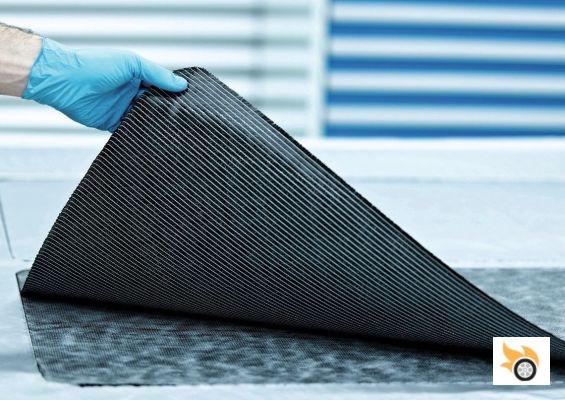
Composite materials, where 1+1 > 2
The origin of composite materials is as old as civilization, adobe was probably the first of them. The idea is to join two different materials so that they complement each other and have better properties together than the two separately. Other examples are reinforced concrete, classic gypsum tow, fiberglass, and today's case, carbon fiber composite. In this case, it is the fibres that provide the strength and the resin binds them together to hold their position. In other words, the fibres resist traction, the resin resists deformation and together they resist compression.
The product obtained is very hard for its weight, does not deform with heat, is resistant to chemical aggressions and is a conductor of electricity and heat. It is fascinating to hold a cloth made of carbon fibres, which is a coarse cloth with a cold touch, and then to hold a piece of composite. The latter, despite its plastic appearance, has a very metallic feel to it, if you rap it with your knuckles it sounds like sheet metal. It really is a very strong product for the weight it has. To get a part with equivalent strength to steel, carbon fibre takes up only 5% more and weighs less than a quarter as much as steel, although it is six times more expensive.
The table below shows the specific hardness of various compounds, that is, the ratio between hardness and density. In other words, we say that spider silk has a better specific hardness than titanium, because having more or less the same hardness, the density of this silk is one third of titanium. Therefore, we say that the specific hardness of spider silk is three times that of titanium.
| Material | Specific hardness
(kN-m/kg or KYuri) |
| Concrete | 5 |
| Rubber | 16 |
| Copper | 25 |
| Polypropylene | 28 |
| Stainless steel (304) | 63 |
| Bronze | 68 |
| Nylon | 69 |
| Oak | 115 |
| Magnesium alloy | 158 |
| Aluminium alloy (7075-T6) | 204 |
| Titanium | 288 |
| Balsa | 521 |
| Carbon-epoxy composite | 785 |
| Spider silk | 1.069 |
| Silicon Carbide Fiber | 1.088 |
| Glass fibre | 1.307 |
| Basalt fiber | 1.790 |
| Vectran | 2.071 |
| Carbon fiber (AS4) | 2.457 |
| Kevlar | 2.514 |
| Zylon | 3.766 |
| Graphene | 130.000 |
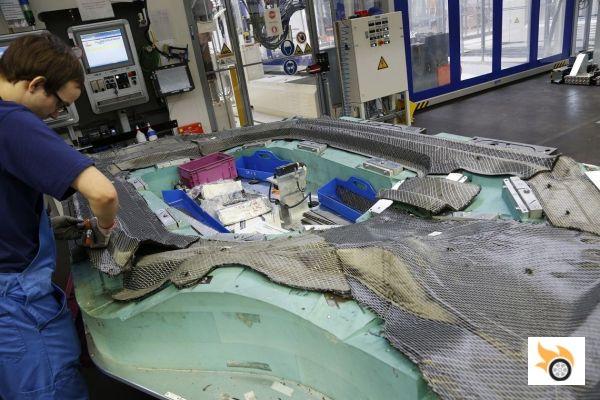
Manual fabrication of composites
To manufacture a composite, we place pre-cut canvases on a mould, between canvas and canvas we add a layer of resin and press on it to eliminate bubbles. Canvases are usually pre-cut given its price, this way we optimize the fabric to discard as little as possible. The first layer is the one that is put with more care so that it is perfectly stretched and with the perfect weft. This care with the first layer is not functional, but to take care of the appearance of the composite, because surely that part will be visible.
The rest of the canvases are usually placed rotating the weft in each layer, so that it has strength in all directions, you also have to trim the excess material. After placing all the layers, it is bagged and vacuumed, to give it shape and eliminate any possible bubbles. When the vacuum is complete, it is placed in a pressurized oven called an autoclave. After a while, the material is set and free of bubbles. All that remains is to take it out of the mould. An important note is that, once the piece is made in carbon, there is no more adjustment. If the piece does not come out well, it is not possible to adjust it by hammering it as you would do with metal, nor by heating it, like some plastics.
The latter is one of the characteristics of carbon fibre: either it absorbs the energy without deforming or it breaks, there is no middle ground. To facilitate the work of molding, you can use fiber canvases impregnated with resin from the factory, which saves us that step manually, we only need to apply pressure. All this is for flat pieces, when the pieces to be manufactured are tube-shaped, such as pillars, cores of a light material are used which are surrounded by layers of fibres.
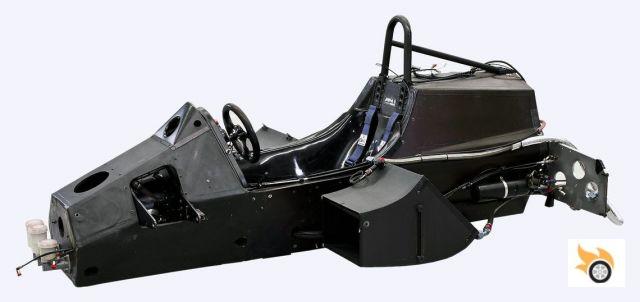
Summary of its use
Carbon fibre was first used in aerospace technology. It is an ideal product for the construction of fuselages and aerodynamic elements that are strong and very light. It was also used in the construction of the blades of a Rolls-Royce turbojet in 1968, although it was soon withdrawn due to the fact that the impacts of the birds ended up destroying them. As we said before, carbon fibre does not yield, it either holds or breaks. It is still used in the manufacture of fuselages and aircraft wings.
The first car to use carbon fibre was the McLaren F1 MP4/1 in 1980, since then, McLaren has only built chassis with this material. Of course, the MP4/1 was followed by the rest of the single-seaters, which has become the symbolic material of F1. Little by little, carbon fibre has been used in all sporting disciplines where lightness and budget are important. On the road, both the 1987 Ferrari F40 and the 1988 Lamborghini Countach 25th Anniversary had carbon fibre parts in their chassis. In that year, Lamborghini's head of composites, Horacio Pagani, asked for an autoclave to produce larger parts for future models. Faced with management's refusal to invest in composite materials, which they saw no clear use for, Horacio set up his own carbon fibre engineering company. Years later he would become a specialist in this new field and would go on to found his own brand of cars and patent a new composite, as we will see later.
In 1992 the first car, or should I say sports car, with a full carbon fibre chassis was created, the McLaren F1. From this model onwards, the carbon fibre monocoque chassis became standard in supercars. Over time, it began to be used in aerodynamic appendages and body panels on premium sports cars of some lower echelon. As it has become known, it is increasingly used in visible places, even if they are not so logical, for example, in intake manifolds, protections in the engine compartment, cams behind the steering wheel and any embellishment that we can imagine.
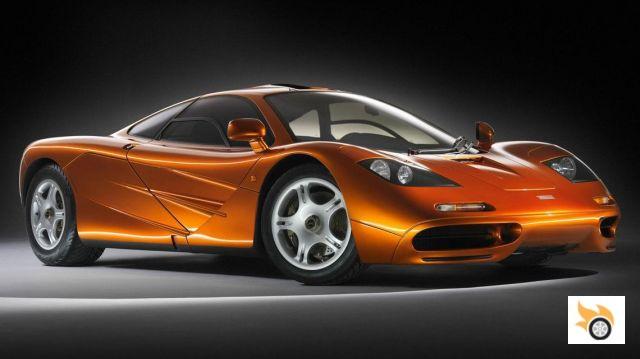
The previous elements could be built in injected plastic, much cheaper and with the necessary hardness for its use. On the other hand, carbon fibre is so well known that a part of it is always left in sight, so that the typical framework can be seen. In short, a good sports car of today must not only have carbon, it must also show it. A current decoration option is usually called "carbon", in which exposed carbon fiber trims are used, but if what you are looking for with carbon is to save weight, it makes sense not to put a trim. This composite material is so well known that the use of carbon fibre has been displaced from the chassis to the decoration, that is, there are cars with the option of carbon decoration without the option of chassis elements.
As its price has been reduced, carbon fiber has been used in less exclusive cars, the Alfa Romeo 4C with fiber monocoque and a starting price of 62,000 euros is an example, it is not cheap, but it is not like buying a hypercar. The least exclusive brand that is introducing carbon fiber in its range is BMW. It started with some details in the interior and in its aerodynamic appendages, eventually built the M3 with a carbon fiber roof. Since this model appeared, it seems that any white BMW with a black roof will run a lot more. Another example of BMW is the i3, as you know is a 100% electric vehicle with the chassis built in aluminum and carbon fiber. In the next point we explain how its parts are built in composite.
The evolution of the use of carbon fiber follows the typical path of technological innovations: aerospace technology, high-level competition, general competition and premium cars. If it reaches the B-segment, we will be able to say that it has become widespread. For the time being, the use of carbon fibre-based composites is still in premium categories, albeit with more and more uses. From the first uses for aerodynamic appendages and chassis parts, we have moved on to mirrors, transmission tunnels and shafts, seats, steering wheel, transmission cams, wheels and practically any rigid part you can think of.
Up to this point we have described the most conventional part of carbon fibre, both in components and procedures, let's move on to see the current state of these composites.
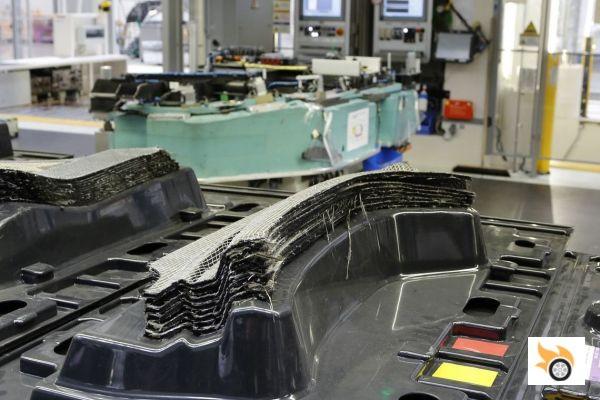
Automation
To reduce the price of a process it is essential its mass production, to reduce costs in production and raw material by economies of scale. According to a study carried out by Jaguar, making a vehicle in aluminium instead of steel lightens the product by 40% and doubles its price. Converting the chassis from aluminium to carbon fibre reduces the weight by 30%, but makes it 10 times more expensive. In other words, converting a car to its carbon fibre equivalent reduces its mass by 60%, but makes it 20 times more expensive. As you can see, that's a lot of money.
The study goes on to say that the cost of a carbon fibre structure in small units (less than 1,000 per year) can be around 36,000 euros. If more than 1,000 are produced per year, that amount is reduced by half. If we move to more than 10,000 per year, the amount would drop to about 7,000 euros, about one-fifth of the initial price. According to this study, the cost of a carbon chassis in mass production compared to an aluminium chassis is only twice as much, four times more than steel. These numbers are already more affordable. This is why the price of an i3 is in line with other similar electric vehicles. Let's go on to summarize the production of carbon fiber panels for this model.
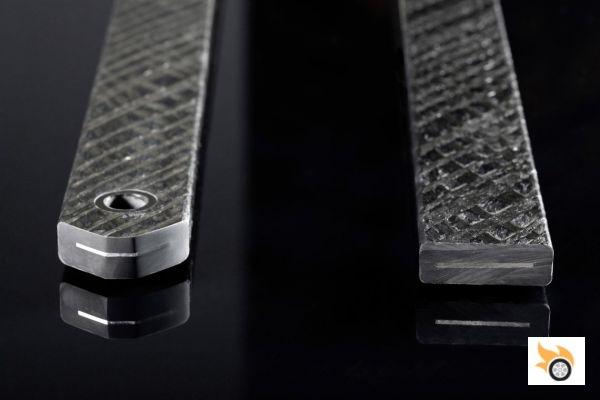
It is always complex to automate a process where the objects to be handled are soft, which is what happens with carbon fiber fabrics. The first automotive company to develop an automated system to build molded parts is BMW. To do this, it uses the same canvases that can be used by hand. These carbon fiber canvases are taken to molds, a press makes the necessary force for the canvas to take the shape. While it is curing in the mold, a robot cuts off the excess carbon fiber, as the canvases used are rectangular. These parts are sub-components of the chassis, they are then all placed by hand into a larger mould.
This mould is then taken to a much larger press, which is where the chassis part is finished. The leftover fibre and resin are cut in water by two robots. This way the carbon panel is ready, once all the panels are finished, they are assembled and joined to the aluminium subframe, which contains the batteries. Here you can see a video of the complete production of the i3. What is the disadvantage of this process? As far as I can see only one, the aesthetics. If you remember, when the composite is made by hand, the first layer is placed with great care, because it will probably be visible. When it is done automatically, this factor is lost, and the car does not receive us with the same elegance. You can compare the two very different ways of receiving an i3 and a 4C in the accompanying images.
There is another type of automated composite production called pultrusion, it is basically an extrusion of plastic material and fibers in continuous mode. In this case they go through the same mold: a metal core, carbon fibers and the resin that binds them together. This process needs less energy and has practically no loss of material. The disadvantage is that only extruded parts can be made, i.e. the same profile elongated on one axis.
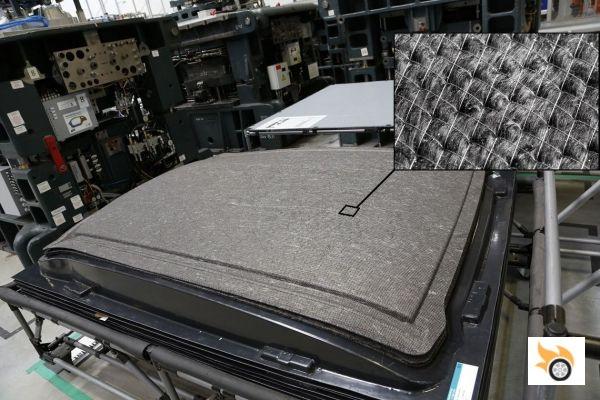
Recycling
One of the current concerns in the industry is how to impact as little as possible on nature, as well as reducing any kind of cost. In the case of metals, such as steel or aluminium, any production leftovers are sent for recycling. Once a car's useful life is over, its metals are also recycled. From these scrap metals, alloys with the same or even better characteristics than the original ones can be produced, and we can recycle infinitely.
Since 2015, 95% of the weight of an end-of-life vehicle has to be recyclable, only 5% can be simple waste.
As for plastics it is a bit more complex, as there are many more types and it is not always possible to produce plastics of similar quality to the material they come from. In the case of carbon fiber is more complicated, it is very difficult to separate the fibers from the resins. On the other hand, the amount of parts manufactured in this compound is not so large as to generate a specific recycling industry.
However, it is easier to recover the leftover fibres produced in the cuttings of the canvases before moulding them. Recalling the i3's automated composite manufacturing, we said that the leftover canvas trimmings that were left outside the mould were cut out. These fibres are recovered and carded rather than woven, forming a kind of felt. BMW is committed to using a minimum of recycled carbon fibres in its cars. In their models they are used, above all, in the roof and the trunk divider panel.
Zylon in Formula 1
We already mentioned that the first car to use carbon fibre was the McLaren MP4/1 in 1980, becoming a de facto standard in F1. Many years later, before the 2007 season, and for safety reasons, regulations appeared regarding the use of these materials. The regulations say that the structures of the nose and rear of the car must be deformable for the absorption of possible impacts. On the other hand, the sides of the chassis must be 6 mm thick and covered with an anti-intrusion sheet made of a material called zylon. These sheets must extend from the bottom of the cockpit to the driver's head area.
On the other hand, since 2011, the top of the visors of F1 helmets have a 50mm high strip, also made of zylon, to prevent objects from entering. This regulation came about after a spring hit the visor of Felipe Massa's helmet in 2009. This strip only increases the weight of the helmet by 70g, but doubles the strength of the visor. In Nico's image, the zylon strip is covered with sponsor advertising. Zylon is known as the "carbon fiber of carbon fiber", let's see why.
Zylon, or PBO, is a synthetic fiber created by the Japanese company Toyobo in the 80s of the last century. This fiber is very difficult to create, hence its high price. According to its creators, zylon is the fibre known to have the highest tensile strength. According to what we are told, a strand of 1 mm in diameter is capable of supporting a weight of 450 kg, not bad at all. This fiber has a specific resistance higher than carbon fiber, that reason would be enough to use it in F1, but it has another one that is also very important. This second reason is that it withstands up to 650 ºC before burning, keeping its shape and avoiding the harmful gases that carbon fiber gives off in its combustion.
These two qualities, resistance to intrusion and fire, make this material perfect for single-seaters and the demanding environment of competition. Just remember how Fernando Alonso came out with only a slight limp after a 300 km / h gliding flight.
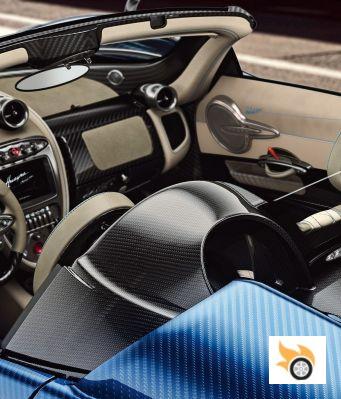
Not just carbon fibre, when three or more is not a crowd. Pagani with carbotanium
As we said, Pagani was one of the pioneers in the use of composite materials. In 2009 it used a new composite for the first time in the Zonda R. Strands of titanium were added to the carbon fibers. This makes the resulting composite more elastic and, in the event of an accident, it does not explode into thousands of splinters. The latter is a potential problem with carbon fibre. When a carbon fibre composite yields, it does so by breaking into a multitude of splinters. If the size of these splinters is large, it is not a concern, we just have to be careful not to cut ourselves with them, as their edges are usually very sharp; if their size is very small they could be inhaled when breathing. The current version of the Huayra also uses this material, in addition to the advantages of lightness, strength and flexibility, the manufacturer gives us a beautiful carbon-metal texture.
Other times carbon fibers have been mixed with other aramid fibers, the best known is Kevlar. These synthetic fibers are from the polyamide family, like nylon. Its resistance is lower than carbon fibre, although it absorbs the energy of the blows very well. It is not currently used much, perhaps it is kept for aesthetic reasons. Since it can be coloured when it is manufactured, it is used to create canvases of a colour other than black. As we already said, the current trend is to show the fiber, unlike in the beginning, which was always hidden.
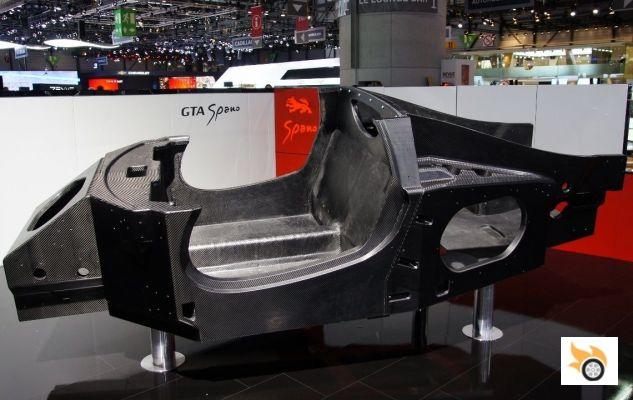
Graphene with the GTA Spano
Okay, giving a review of the composite fibers used in the automotive industry, both those we have seen and those we have not, and in order of appearance would be these: fiberglass, kevlar, carbon fiber, zylon and carbotanium. Has it stopped there, well no, we continue investigating. If there is a material synonymous with the future right now, it is graphene. This material is composed entirely of carbon, what differentiates it is the way it is its molecular structure. So far we have been talking about synthetic polymers.
Polymers are macromolecules of chains of repeated monomers. These monomers are, in turn, other molecules, capable of joining. In the case of graphite, it contains only carbon atoms in a two-dimensional structure in which each carbon atom is bonded to three other equidistant ones. This type of bonding gives rise to a structure that forms hexagonal cells, similar to a honeycomb. We say that it is two-dimensional because the graphene forms a single layer of thickness one atom, that is, an atom is only linked with the adjacent lateral ones.
The result is a very resistant structure, because they form a perfect bond. On the other hand, each atom has a free electron in its last orbit, which makes it very easy to move; in other words, it is highly conductive. The raw material for this material is graphite, hence its name. It will sound familiar to you because it is the material from which our pencil leads are made, the only difference is that graphite is laminated and graphene is a continuum.
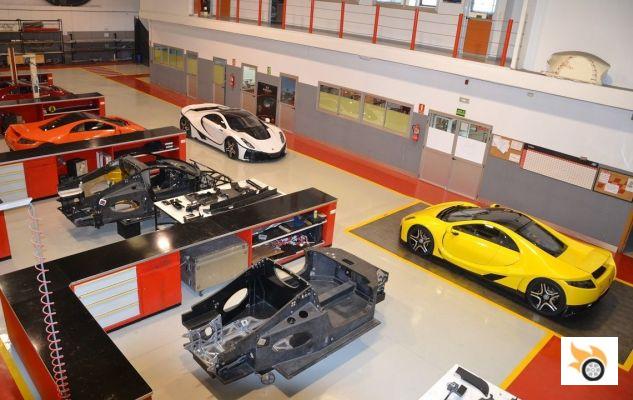
It seems a very new material, however its structure was described in 1916. This material was forgotten because it was thought to be unstable and no application was found for it. Almost a century later, in 2004, the material was "rediscovered" by Andrey Gueim and Konstantin Novosiolov, who received the Nobel Prize in Physics in 2010 for "their innovative experiments on the two-dimensional material graphene".
Because of its atomic construction, its physical qualities are extreme in several areas. For example, it is the most resistant material known. If you look at the chart at the top, graphene is at the bottom of the list of specific hardness. If we could build a 1 m² canvas out of a single layer of this material, it could support 4 kg, I repeat, a single layer of 1 atom thickness. In other words, we could build a 1 m² graphene hammock for a 4 kg cat weighing only 0.00077 g, less than a cat's moustache. Research is still being carried out on this material to discover more characteristics applicable to industry. The price for the moment is very expensive and it has not been applied much in the automotive industry. The first time graphene has been used was for the second series of the GTA Spano. As you may already know, it is a hypercar manufactured in Valencia.
In this vehicle graphene is applied in three types of components. The first component is the chassis, which is made of carbon fiber and is reinforced with graphene. The second type of component used are the skins of the interior of the passenger compartment, to strengthen them. The last use of the three is for another family of qualities of graphene - in the future we will see that they are as important as its hardness. It is used in the construction of its batteries. Because of graphene's low electrical resistance, these batteries are smaller and lighter.
At the moment it is a very scarce material because of how expensive it is to manufacture, if a more economical process is invented, it can really become the material of the future, and if there is anything left over on the planet, it is carbon.
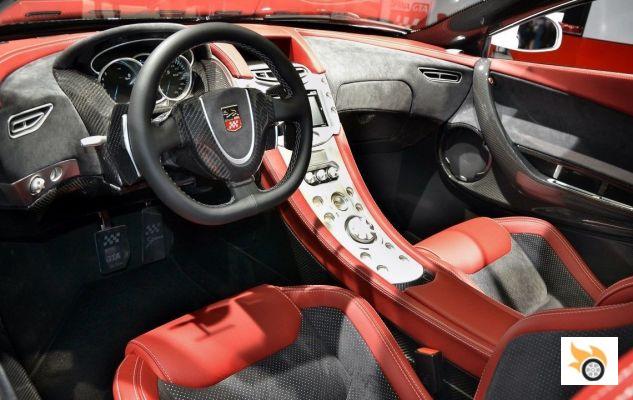
What will the next vehicles be like?
As we said in the study of the current metallurgy of the automobile, the present and future of the automotive industry is to select the right material for each component. That is, for a cargo area, steel will always be better, as it is the one that best resists mistreatment, even if the chassis is made of aluminum, just look at what has happened with the aluminum F-150 pick-up trucks. Most parts that do not need much pressure will be built in injected plastic, look at the clutch pedal of your car, it will probably be plastic. As more and more composite materials are produced, the price will go down and it will be possible to put them in cheaper and cheaper cars.

























